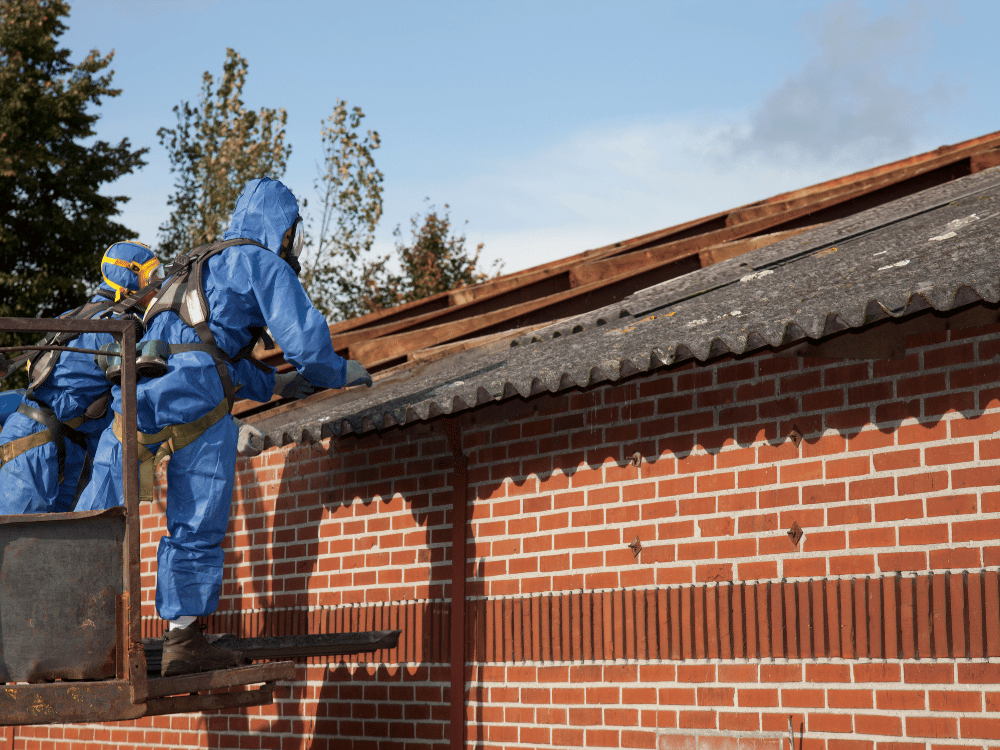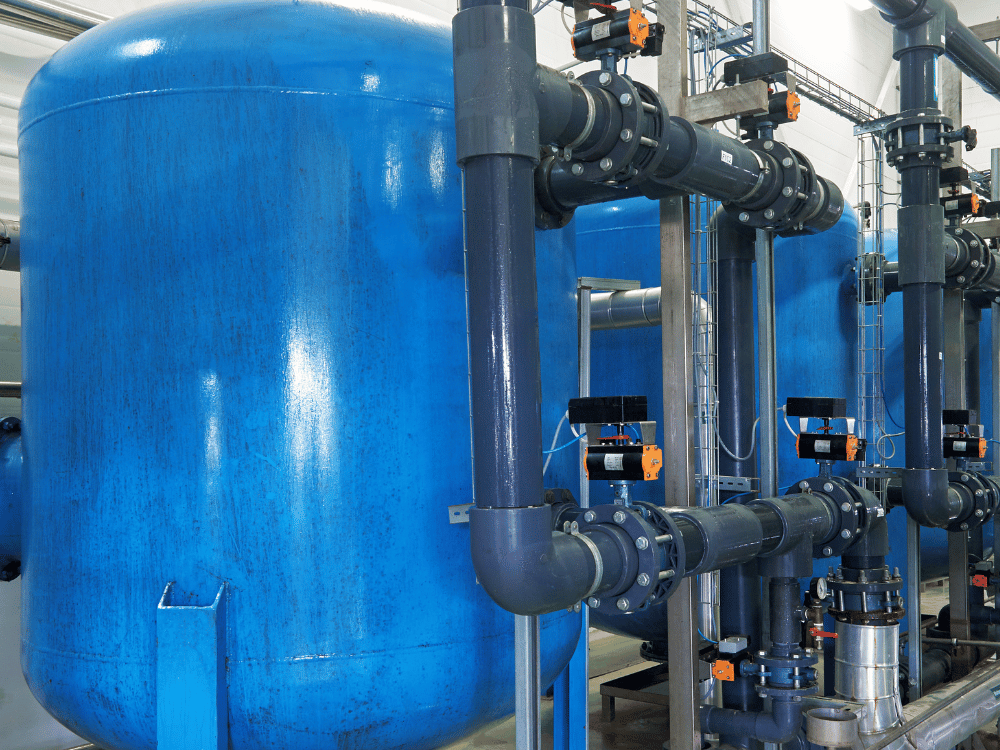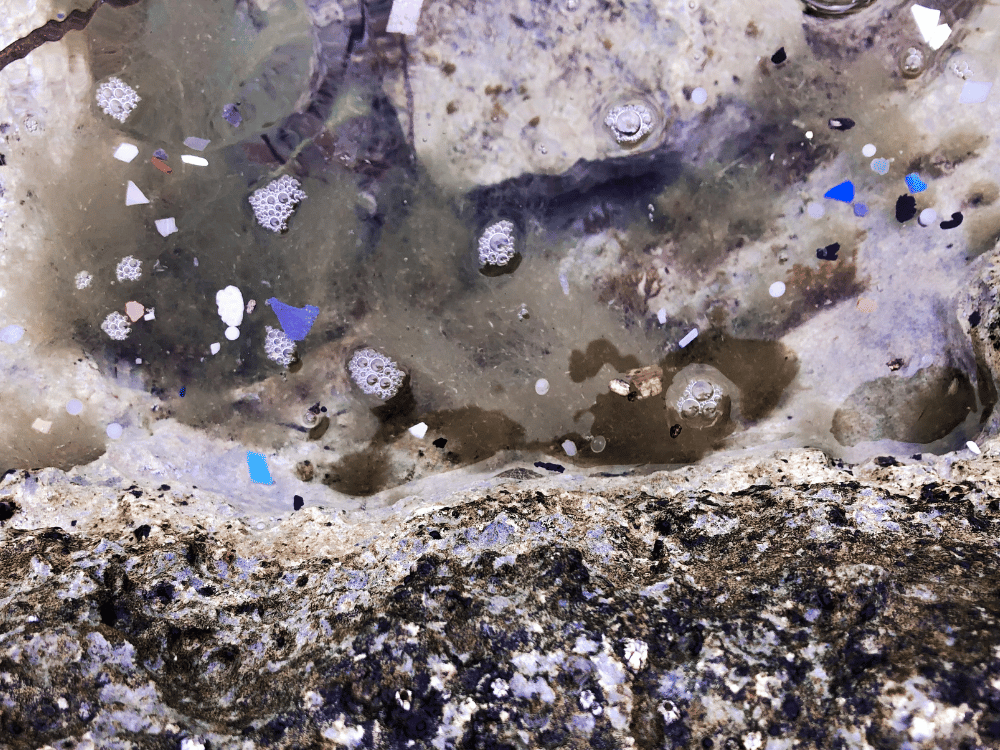There are an increasing number of ways that drinking water can become contaminated with asbestos and other toxins. It’s more important than ever to learn what regulations are in place to protect your health and what can be done to purify the water.
Written by Sean Marchese, MS, RN • Edited By Fran Mannino
Asbestos Contaminated Water
For most of the 20th century, asbestos had been used in municipal water, wastewater and stormwater systems. As these water systems develop cracks and degrade over time, the danger of asbestos leaching into the water supply grows.
Asbestos in the water supply at certain levels poses a health risk to the general public.
According to the World Health Organization, most of the population of the U.S. consumes drinking water contaminated with asbestos, but in concentrations low enough that it is unlikely to cause health problems.
However, when asbestos levels in drinking water do rise above the maximum safe limit, water suppliers are required to notify customers within 30 days of violation.
Knowing whether you are at risk beforehand and having the knowledge to deal with contaminated water could prevent you from lifelong health issues such as malignant mesothelioma and other cancers.
How Does Asbestos Get into Water Supply?
Many water system pipes built in the early to mid-1900s included asbestos in the concrete and cement. Asbestos cement pipes can still be found in many homes today that were built before the 1980s.
The average recommended lifespan of asbestos-containing pipelines is about 70 years.
- Asbestos cement pipes make up between 12% to 15% of drinking water systems in the United States and are also used across Europe, Australia and Japan.
These pipes can degrade due to weather, demolition or corrosion. This is especially true in abandoned or unmaintained buildings that do not undergo proper inspection. As pipes degrade, the asbestos fibers used in the construction materials leak into the water supply.
Asbestos fibers have been present in water that flows through household taps for decades, but communities are experiencing more cases of toxic concentrations as materials made with asbestos are reaching the end of their lifespan.
Asbestos fibers do not dissolve in water and they do not evaporate into the air. Fibers that are small in diameter may be carried by wind or water for long distances before settling in soil or entering the water supply.
Common sites of asbestos contamination include landfills and construction sites. Naturally occurring asbestos can also accumulate in high concentrations during events such as landslides. A notable example is the Swift Creek landslide in Washington, which carries asbestos downstream and pollutes over 120,000 cubic yards of sediment each year.
In areas of great damage after natural disasters, demolition is often used to clear debris. Large-scale disasters such as fires, hurricanes and tornadoes expose housing and building materials and present the opportunity for asbestos fibers to be released into natural water sources.
Contamination of rivers, streams and lakes leads to contaminated water supplies from everyday drinking sources. Asbestos fibers that leak into the water system not only place residents in danger of exposure, but also affect local wildlife.
Contractors who attempt to remove asbestos concrete might cause crumbling if the concrete is brittle or damaged. Rainwater that collects on industrial waste, asbestos roofing or pipes may also contain asbestos and become part of the drinking supply.
Older construction materials that were made with asbestos prior to the 1980s include:
- Siding shingles
- Insulation
- Textured paint and patching
- Artificial ashes and embers used in fireplaces
- Vinyl floor tiles
- Vinyl sheet flooring
- Stovetop pads
- Walls and floors around woodburning stoves
- Hot water and steam pipes
- Oil and coal furnaces
Thankfully, water treatment plants have several methods in place that detect and remove asbestos from drinking water. These are monitored by the Environmental Protection Agency.

How Water Treatment Plants Combat Contamination
According to research, the majority of water consumers in the U.S. are not exposed to toxic levels of asbestos concentrations in their drinking supply. However, some populations are at risk of concentrations over 10 times the typical amount due to natural erosion, processing mines, landfill erosion and disintegration of asbestos construction materials.
Asbestos fiber size distribution is dependent on the source of the fibers. Contamination of water via asbestos cement averages fibers 4 micrometers in length. The average fiber length in water contaminated by natural erosion is 1 micrometer.
The Environmental Protection Agency, under the Safe Drinking Water Act of 1974, has set a maximum contaminant level of 7 million fibers per liter. This level was determined to be an acceptable level of protection to prevent health issues, based on the best available science.

- 53% of total river and stream miles, 71% of lake acres, 80% of estuarine square miles and 98% of Great Lakes shoreline miles are classified by the EPA as impaired and unacceptable for at least one designated use.
Reverse osmosis systems are the best option for removing asbestos from water. This process removes unwanted materials from water via a pressure mechanism that forces water molecules through a semipermeable membrane. Normally, water will flow in the direction of higher concentration. Reverse osmosis forces water to flow in the opposite direction toward a more dilute solution.
Any water treatment system that uses reverse osmosis filters that are 1 micron or smaller (microfiltration, ultrafiltration or nanofiltration) will reduce the vast majority of asbestos in water.
More sophisticated water treatment facilities can use granular media filtration to remove up to 99.99% of asbestos fibers such as the chrysotile and amphibole types. Effective granular media filtration requires diligent treatment plant operations that control pH and measure water turbidity.
According to the EPA, the most effective means of asbestos removal is a diatomaceous earth filter coated with aluminum hydroxide and used at 0.10 NTU water turbidity. Newer research is experimenting with magnesium oxide and other filtration methods that do not produce as much sludge byproduct as chemical coagulation methods.
- Publicly owned water treatment plants generate over 8 million tons (dry weight) of sludge annually.
For now, filtration methods across the country do an acceptable job of filtering the water for asbestos before it reaches faucet taps. However, preventing contamination in community water supplies will take greater effort as more asbestos cement piping needs to be replaced.
Technology companies are developing processes to identify systems in need of repair and replacement before they pose a risk to the community. Some piping replacement efforts have been able to replace up to 15 miles of asbestos cement piping per year.
Meanwhile, there are steps individuals can take to deal with contaminated water in their homes and to report it to the proper authorities.

Tips on Dealing with Contaminated Water
If you believe your water may be at risk for toxicity due to a recent natural disaster or proximity to contaminated materials, there are steps you can take to identify the risk and protect your health.
Most importantly, you should identify the source of the contaminated water. Damage to the water supply may be in the form of broken pipelines that can introduce sewage and stormwater into clean water. This is typical after a natural disaster such as a hurricane or tropical storm.
If the water appears cloudy, dark or has an odd smell, assume it is contaminated and immediately discontinue any uses for drinking or cooking.
When preparing for natural disasters, it’s a good idea to store water beforehand in coolers or freezers so there is a clean water supply in case running water becomes unusable.
The easiest way to stay safe from contaminated water is to invest in water filtration. There are many types that either attach to a faucet or store water in pitchers. There are also options that are installed for the entire household water supply system.
Research and verify what contaminants will be filtered out by any filtration systems under consideration. Not all water filtration systems remove the same toxins. Each household situation is different. The type of filter needed will be determined by the risk of certain contaminants.
Storing bottled water is another option many families use if they are preparing to go without potable water for an extended period of time.
Remaining educated on what your household’s risk to asbestos exposure is will keep your family safe until the problem of asbestos infiltration in water can be eliminated.
How to Report Water Contaminated with Asbestos
The Emergency Planning and Community Right to Know Act (EPCRA) is a federal law that requires facilities in certain industries to report annually on their release of certain chemicals.
- The Community Right-to-Know Hotline can be reached at 800-424-9346.
The Community Right-to-Know Hotline is used to report new cases of asbestos exposure risk or for questions about possible contamination. You can also contact your water utility with questions or concerns.
The EPA requires all community water systems to prepare and deliver an annual Consumer Confidence Report, or water quality report, by July 1 of each year. If you have a private water supply, request a copy from a nearby community water system.
Guidelines for Enhanced Management of Asbestos in Water Supply at Ordered Demolitions
Enhanced Management Practices (EMPs) have been established by the EPA to provide guidelines on preventing the release of asbestos when demolishing buildings. These guidelines have been built from existing state and local government rules and regulations and are provided to owners, operators, contractors and agencies for use during demolition.
The guidelines suggest that accessible asbestos be removed prior to demolition since it can be made friable during the demolition process. Much of the resulting dust is controlled by a water spray that prevents the majority of fibers from escaping into the air. However, this water can be responsible for transporting asbestos to other areas.
The EPA also provides a National Pollutant Discharge Elimination System (NPDES) Construction Stormwater program. Its goal is to educate workers on practices that prevent the migration of contaminated water from demolition sites and reduce the rate of asbestos fiber redistribution.
Water Supply resulting from demolition substances can act as a slurry, carrying asbestos fibers off-site and exposing them to the air after the water evaporates. The EPA has identified EMPs in two distinct areas: preparatory planning for the allocation of resources and on-site policies for demolition activities and site remediation.

Before demolition can take place, a checklist is used to verify appropriate water management at the site. Among other safe practices, the checklist confirms:
- A certified asbestos inspector has examined the site
- The EMPs account for the surface and soil types at the site
- Sufficient resources have been allocated to all stages of cleanup and remediation
Field EMPs make strategic use of engineered supplies and equipment to contain the pollutants and prevent them from entering the environment after demolition. This equipment includes barriers, berms, absorbent media, covers and vacuum trucks.
A regular series of inspections by certified personnel take place during the demolition process. The demolition teams are also expected to employ satellite imagery and radar to prepare for any geographical issues or weather events.
Asbestos in Groundwater Regulations
The term groundwater refers to water that is held within soil or between rocks, typically underground. Several naturally occurring minerals in addition to asbestos are measured for their concentrations in groundwater, including arsenic and chromium.
Current federal groundwater regulations monitor wells for asbestos in concentrations greater than 7 million fibers per liter that are longer than 10 micrometers.
Asbestos in groundwater has the potential to become deposited on surfaces such as walls, floors and vegetation. As the water evaporates, the airborne fibers contribute to indoor and outdoor health threats.
New studies show that asbestos fibers can move through sand and soil, testing the long-held belief that asbestos waste piles are less dangerous when capped by soil. Organic acids produced by plants, fungi and bacteria coat the asbestos fibers and increase their mobility through soils.
The dangers of asbestos contamination in the water supply are ever-present. Ingestion of asbestos fibers can lead to peritoneal mesothelioma and other dangerous abdominal issues.
Being mindful of the regulations set by the EPA can reduce concerns and increase preparedness. With the right knowledge and precautions you’ll be able to detect and manage potential asbestos exposure present in your home’s water supply.
You can check your water quality through the Life Water Report. You can also visit http://www.lifewaterreport.com and enter your zip code.
Find out if your drinking water is contaminated with a FREE WATER REPORT of your area.
By working together, we can create a healthy and safer environment for ourselves and future generations.
Visit http://www.LifeSciencesWater.com or http://www.LifeWaterReport.com and get a multi-stage filter system to improve your and your Family’s health.